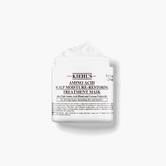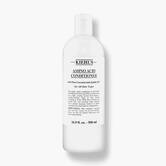Type “how fast does hair grow?” into Google, and you'll be inundated with articles with titles like “How To Grow Hair Faster” and “How To Grow Long Hair In 5 Easy Steps.” Intriguing? Sure. But here’s the thing: Your hair grows at a set rate—and it’s not something you can change (at least, not with haircare products). We know that might be a bummer if you were hoping to discover how to add a few inches to your mane by next season. While you can’t change how quickly your hair grows, strengthening your strands can help limit damage and prevent breakage, which can make it appear longer (even if it’s growing at the same rate it always did).
Here, we’ll answer some of your most burning questions about hair growth. You’ll learn how fast your hair grows and what factors can inhibit growth. We’ll also let you in on a few tips for strengthening weak hair, so it’s less prone to split ends and other breakage. Settle in and read on for the all-in-one Kiehl’s guide to growing (and maintaining) long hair.
How Fast Does Hair Grow?
We’ll cut straight to it: On average, hair grows at a rate of about half an inch per month, or six inches per year. Each hair on your head grows from an individual follicle. At the base of the follicle is the bulb from which new hair grows. Higher along the follicle (toward the skin) is a sebaceous gland that secretes oil to keep your hair lubricated. There are three distinct phases in the hair growth cycle. First is the anagen phase, when new hair is actively emerging in the hair bulb. After that comes the catagen phase, which is marked by a period of inactivity and regression. Finally, there’s the telogen phase, also known as the resting phase. On the scalp, this final phase can last upward of a year.
Though your hair is alive while it remains inside the follicle, it doesn’t emerge from your skin until it’s dead. Your hair consists primarily of dead keratin cells, though the hair shaft also contains other essential compounds, including water and lipids, all of which play a role in your hair’s health and appearance.
What Factors Affect Hair Growth?
While the average hair growth rate is about six inches per year, this number varies widely among people. Several factors, including age, genetics, and gender, can influence how fast hair grows: For example, studies show that male hair tends to grow faster than female hair, while natural, textured hair tends to grow slower than other hair types.I External factors that can affect hair growth include the season, your stress levels, and the health of your scalp. Additionally, excessive breakage can make your hair appear as if it’s growing more slowly than it actually is (this is why hairstylists often recommend getting a trim every six to eight weeks).
How To Maintain Long Hair: 5 Tips
While we can’t teach you how to make your hair grow faster, taking proper care of your mane can help prevent your strands from breaking, which may make it appear to grow faster. Here, we’ll outline five tips to follow for long, strong, resilient strands.
Tip #1:
Start At The Source
Research shows that healthy-looking hair starts with your scalp.II The scalp, after all, is skin—and all skin needs proper care and maintenance to function properly. Cleanse and hydrate your scalp with the same care you show your strands.
Tip #2:
Exfoliate Your Scalp Weekly
Like everywhere on your body, dead skin on your scalp is constantly flaking off to make room for new skin cells. While, most of the time, you won’t notice this natural exfoliation, sometimes it can result in visible flaking. In certain cases, this flaking can result in excessive oiliness, dandruff, and itching—all of which may interfere with normal hair growth. Help address buildup with a scalp scrub to promote strong, healthy-looking hair.
Tip #3:
Avoid Over-Shampooing
While regular shampooing is necessary to keep your scalp and hair looking and feeling healthy, over-washing can have the opposite effect. Even with the gentlest technique, shampooing produces friction, which can weaken the hair shaft and, over time, lead to breakage and frizz. Thankfully, for most, shampooing every day isn’t strictly necessary (check out our article How Often Should You Wash Your Hair? for help determining the best washing schedule for your hair type). When you do lather up, do so with a gentle, non-stripping shampoo.
Tip #4:
Keep Your Lengths Nourished
Every time you shampoo, you should reach for a lightweight yet moisture-rich conditioner to help restore your hair’s outer lipid layer. Conditioners also help lubricate the hair shaft and improve manageability, which can, in turn, limit excessive breakage. Look for a conditioner formulated for your hair type and specific needs. And when your hair could use a little extra TLC, supplement with a deep-conditioning treatment mask.
Tip #5:
Layer On a Leave-In
For an added layer of protection against damaging external stressors, apply a moisturizing leave-in treatment to your hair after showering. The right leave-in can also help strengthen dry, depleted strands and leave hair feeling smoother and healthier.







